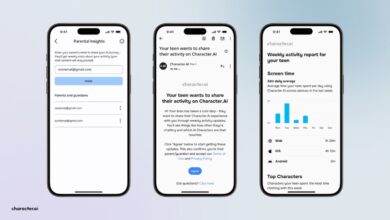Apple’s mixed-reality headset: Release date, price, and everything we know

Apple’s mixed reality headset is something we’ve been hearing about for a while now, but somehow those rumours never seem to materialize. Recently, though, a report revealed that the Cupertino-based company is set to start the mass production of the headset in March 2023, with the device costing nearly $2,000. With the alleged date now closing in, here’s everything you need to know about the upcoming headset.
The exterior
We are yet to see any solid design leaks but seeing that headset combines AR and VR technologies, it will likely offer a wraparound design that will help you fully immerse yourself in its display. The limitation of such a design is that the headset will not let you keep track of your surroundings directly, so the headset will work around this using cameras that will capture the outside world and feed it back to you. Around a dozen cameras and LIDAR sensors will help make this possible, with two of them pointing downward to record a user’s legs, according to some reports. However, Kuo says that there will be 15 cameras, with 8 of them being for AR, 1 for environmental detection, and 6 for biometrics. Rumours also suggest that the mixed-reality headset will feature a fully wireless design.
An older report from The Information suggested that the Apple headset could use straps that will look very similar to those on the Apple Watch Sport Band. The report also claimed that the headset will be made mainly of mesh fabrics, aluminium, and glass — and that it’ll resemble a “pair of ski goggles.”
While VR headsets have traditionally been fairly heavy so far — the Oculus Quest 2 weighs 503 grams, for example — the offering from Apple will weigh only 150 grams, if a March 2021 report from Kuo is to be believed. If Apple pulls this off, its headset will be noticeably more comfortable to wear over longer durations, with significantly reduced fatigue. This will likely be done making use of lightweight fabric over heavy plastics.
The internals
It is rumoured that the Apple headset could feature a whopping 8K per eye resolution, giving viewers a super-high amount of detail. For comparison, the Meta Quest Pro 2, which costs $1,500, offers a resolution of ‘just’ 1,920 1,800 pixels.
That does sound a little far-fetched, though, and a January 2022 report from Display Supply Chain Consultants (DSCC) corroborates this, claiming that the resolution in each will instead be 4,000 4,000. The same report also says that the device will incorporate 3 displays, out of which the 2 front panels will be micro-LEDs, while the third one will be an AMOLED unit. This third display will be built for peripheral vision and will feature a lower resolution since pixel density will not be so important with it.
Some of the biometric cameras could be used for iris recognition, allowing Apple Pay authentication through the headset itself, Kuo has reported. This will also let users authenticate payments without having to input a password on the iPhone. Kuo has also suggested that the headset might offer the ability to seamlessly switch between AR and VR modes, giving it a notable advantage over headsets that are either AR or VR, or don’t allow smooth switching between the two.
Along with advanced biometrics, the Apple headset could offer eye and hand-tracking features. Hand-tracking could be done using a finger clip, “VR gloves“, or even through the Apple Watch, as the company’s own patents have shown. As for eye-tracking, the aforementioned report from The Information suggests that eye-tracking will allow users to log into their accounts, opening up the usage of the headset multiple people.
The operating system has been tipped to be called rOS, which is an acronym for Reality OS.
Looks like #Apple just accidentally confirmed #RealityOS.
Whoops!https://t.co/IEowqdVcf2 pic.twitter.com/LsNRRalGld
— matthewdavis.eth (@IAmMatthewDavis) February 9, 2022
Pricing and release date
As already stated above, Apple could kick off mass production of the mixed-reality headset in March 2023. Sources told DigiTimes Asia that the device could enter production early next year. Apple supplier Pegatron will be handling mass production, with estimated annual shipments hovering “around 0.7 to 0.8 million units.” The pricing could be around $,2000.








